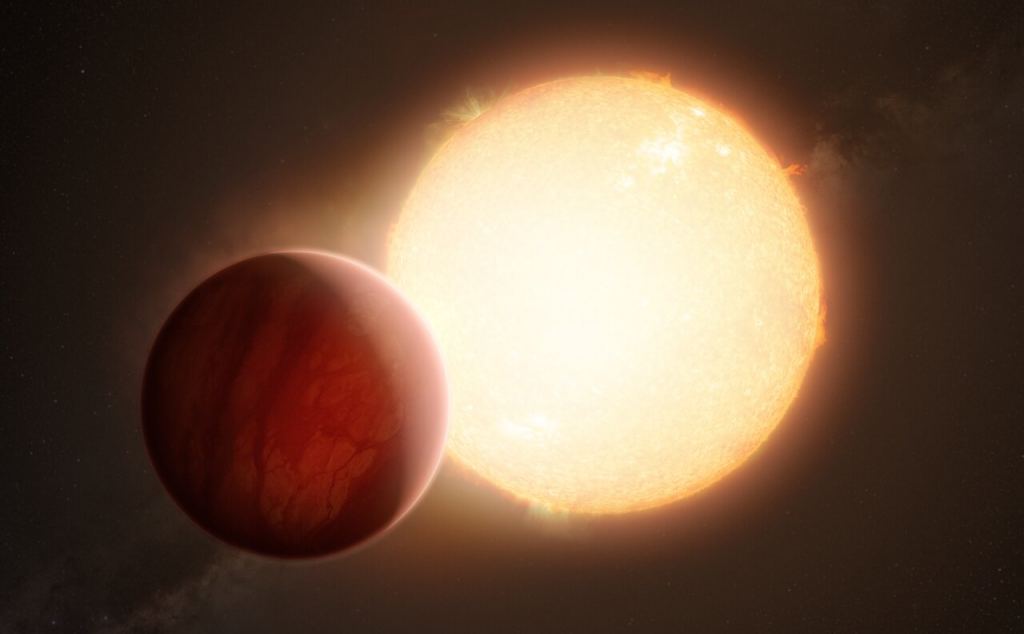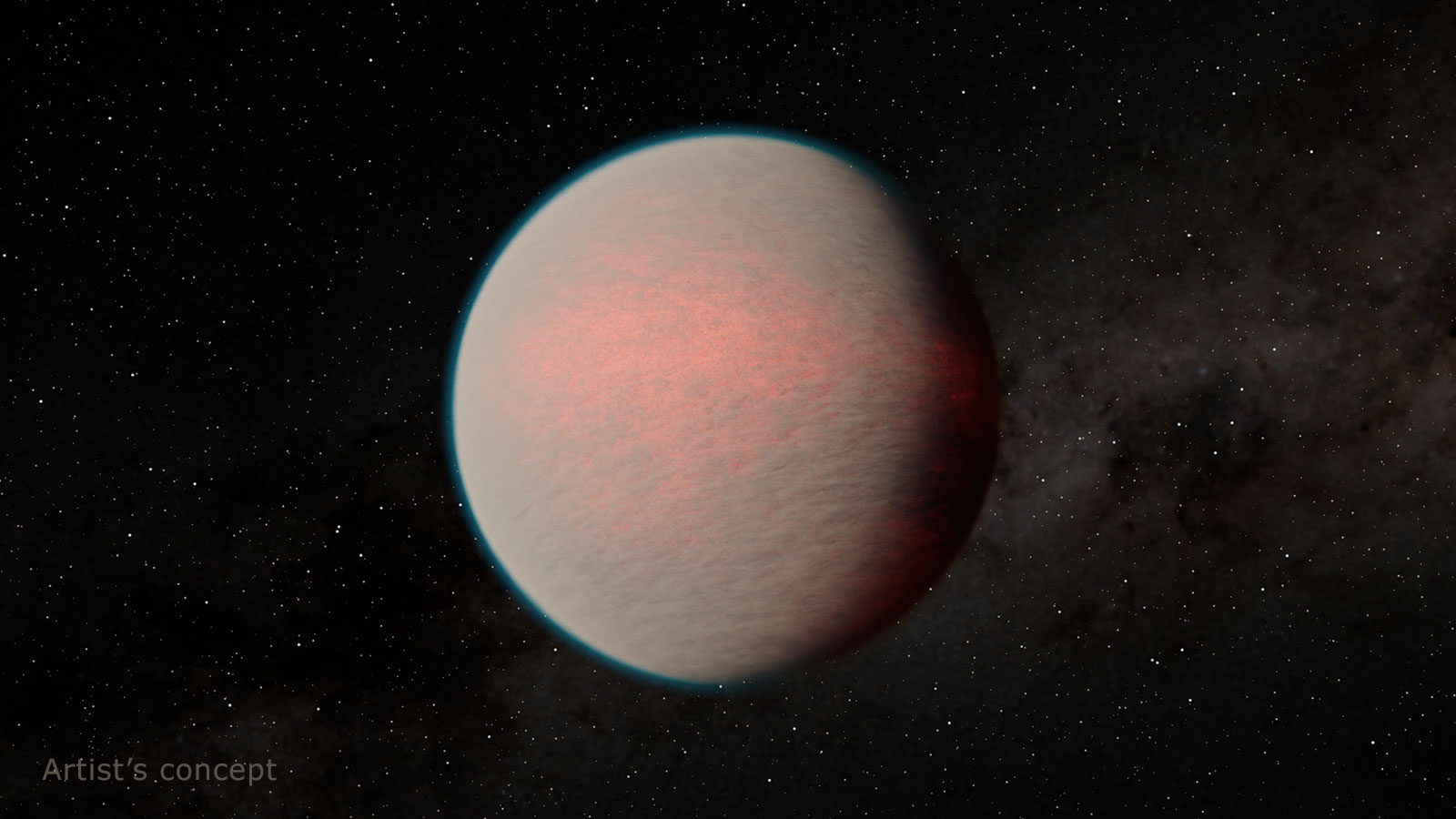Just because there’s no Mini-Neptune in our Solar System doesn’t mean they’re not common. They appear to be widespread throughout the Milky Way, and according to NASA, are the most common exoplanet type. GJ 1214 b is one of them.
One of the James Webb Space Telescope’s stated science goals is the study of exoplanets. It’s made progress on this front, including the well-known TRAPPIST-1 system that hosts seven Earth-sized worlds. (Thanks for the buzz kill, JWST.)
While dreams of finding habitable, life-supporting planets dominates a lot of thinking about exoplanets, there’s more to learn than if individual planets can support life. We still have a load of questions about how planets form, how their atmospheres evolve, and why some types are so common yet absent in our Solar System.
But with so many exoplanets begging to be studied, astronomers using the JWST have to choose their targets judiciously. That judicious process led one team of astronomers to GJ 1214 b (Gliese 1214 b.) They observed the mini-Neptune with the JWST’s MIRI and Low-Resolutions Spectrometer and published their results in a paper in Nature titled “A reflective, metal-rich atmosphere for GJ 1214b from its JWST phase curve.” The lead author is Eliza Kempton, a researcher at the University of Maryland.

Gliese 1214 is a red dwarf star about 40 light years away in the Ophiuchus constellation. The MEarth Project found GJ 1214 b, its only planet, with the transit method in 2009. Follow-up observations with the Hubble suggested it was a waterworld with a thick, steamy atmosphere. It’s about eight times more massive than Earth, and about 2.75 Earth radii.
In the paper presenting its discovery, the authors wrote “We find that the planetary mass and radius are consistent with a composition of primarily water enshrouded by a hydrogen-helium envelope that is only 0.05% of the mass of the planet. The atmosphere is probably escaping hydrodynamically, indicating that it has undergone significant evolution during its history.”
It was the first mini-Neptune found that has an atmosphere, and only the second one where the mass and radius were determined. But any further detail was hidden by the planet’s thick layer of haze or clouds. Considering all this, it makes sense that astronomers wanted to use the JWST to study it further.
“The planet is totally blanketed by some sort of haze or cloud layer,” said lead author Kempton. “The atmosphere just remained totally hidden from us until this observation.”
Kempton and her co-authors went beyond a typical exoplanet observation. Ordinarily, astronomers train telescopes on an exoplanet as it transits in front of its star. The starlight passes through the atmosphere and the light is analyzed to sense chemical constituents and other characteristics. But in this case they followed the planet through almost an entire orbit.
The JWST’s powerful MIRI instrument was brought to bear on the planet as it orbited its star. Its observations created a heat map of the planet that showed both day and night sides, illuminating more details of its atmosphere.
“The ability to get a full orbit was really critical to understand how the planet distributes heat from the day side to the night side,” Kempton said. “There’s a lot of contrast between day and night. The night side is colder than the day side.” The temperatures shifted from 279 to 165 C (535 to 326 degrees F.)

Such a pronounced swing in temperature indicates that heavy molecules are present, like H2O and CH4. If its atmosphere was dominated by the lighter hydrogen, that would signal a different formation and evolution. Ample hydrogen normally indicates that a planet is made of the same things the solar nebula was, meaning it’s made of the same things as its star. But the water and methane could be important clues to the planet’s evolution and its potential watery start.
“This is not a primordial atmosphere,” she said. “It does not reflect the composition of the host star it formed around. Instead, it either lost a lot of hydrogen, if it started with a hydrogen-rich atmosphere, or it was formed from heavier elements to begin with – more icy, water-rich material.”
Planets typically lose hydrogen from their atmosphere because it’s so light. Earth loses about 90 tons of hydrogen and helium into space each day. In fact, mini-Neptunes are sometimes thought of as missing link planets that started out as smaller denser versions of Neptune that lost enormous amounts of hydrogen and helium to bring them down to their current sizes. Did that happen with GJ 1214b?
“For the last almost decade, the only thing we really knew about this planet was that the atmosphere was cloudy or hazy,” said Rob Zellem, an exoplanet researcher who works with co-author and fellow exoplanet researcher Tiffany Kataria at NASA’s Jet Propulsion Laboratory in Southern California. “This paper has really cool implications for additional detailed climate interpretations – to look at the detailed physics happening inside this planet’s atmosphere.”
According to the authors, one conclusion is that GJ 1214b formed further from its star than it did now. Then something happened to send it inward, closer to the red dwarf it orbits. The closer it got, the more of its atmosphere was stripped away.

The authors write that it’s difficult to discern exactly what other chemical components that planet might have, but that hydrogen cyanide, a by-product of methane, could be present. “There is some evidence of additional absorption on the nightside from a combination of CH4 and HCN. Interestingly, HCN is predicted to form as a byproduct of CH4 photolysis; the latter process is needed to catalyze the formation of hydrocarbon haze.” Some of the data suggest that GJ 1214b has a hydrocarbon haze, but it’s not conclusive.
The authors say that their findings rule out an unaltered atmosphere. “Instead, our observations are consistent with a hydrogen-rich but metallicity-enhanced atmosphere. This is in line with predictions that
sub-Neptunes retain primordial atmospheres composed of nebular gases,” but the atmosphere is then reconfigured through mass-loss. Another possibility is that it is a water world, and that its high water content resulted from the planet’s formation beyond the water ice line, or that it incorporated material from that region.
“The simplest explanation, if you find a very water-rich planet, is that it formed farther away from the host star,” Kempton said.
As if often the case when it comes to exoplanets, the first detailed look at one type can start to lead astronomers to conclusions, but with only one data point, any conclusions are preliminary. Luckily, mini-Neptunes are plentiful and the JWST is in the early years of its mission.
“By observing a whole population of objects like this, hopefully we can build up a consistent story,” Kempton said.
More:
- Press Release: NASA’s Webb Takes Closest Look Yet at Mysterious Planet
- Published Research: A reflective, metal-rich atmosphere for GJ 1214b from its JWST phase curve
- Universe Today: Mini-Neptunes can Lose gas and Turn Into Super-Earths

